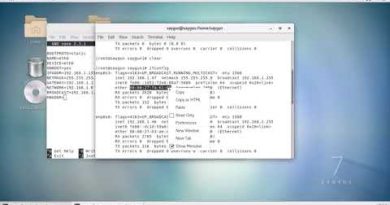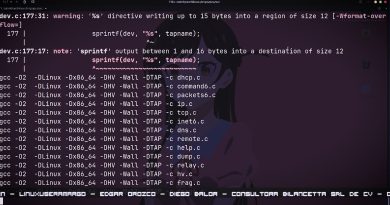How to Install XAMPP in CentOS 7
Disclaimer/Disclosure: Some of the content was synthetically produced using various Generative AI (artificial intelligence) tools; so, there may be inaccuracies or misleading information present in the video. Please consider this before relying on the content to make any decisions or take any actions etc. If you still have any concerns, please feel free to write them in a comment. Thank you.
—
Summary: Learn how to install XAMPP on CentOS 7 in a step-by-step guide. XAMPP is a popular cross-platform web server solution that includes Apache, MySQL, PHP, and Perl, making it easy to set up a local development environment for web projects on CentOS 7.
—
If you’re looking to set up a local web development environment on CentOS 7, XAMPP is a convenient solution. XAMPP is a free and open-source cross-platform web server solution that includes Apache, MySQL, PHP, and Perl. It provides an easy-to-use interface for managing your local server environment, making it suitable for both beginners and experienced developers.
Here’s a step-by-step guide on how to install XAMPP on CentOS 7:
Download XAMPP:
Visit the official Apache Friends website and download the latest version of XAMPP for Linux. Choose the appropriate architecture (32-bit or 64-bit) based on your CentOS 7 installation.
Navigate to the Downloads Directory:
Once the download is complete, navigate to the directory where the downloaded XAMPP installer file is located. This is usually the “Downloads” directory unless you specified a different location.
Make the Installer Executable:
Before running the installer, make sure the downloaded file has executable permissions. You can do this by running the following command in the terminal:
[[See Video to Reveal this Text or Code Snippet]]
Run the Installer:
Execute the XAMPP installer by running the following command in the terminal, replacing “xampp-installer-file-name.run” with the actual name of the downloaded installer file:
[[See Video to Reveal this Text or Code Snippet]]
Follow the Installation Wizard:
The XAMPP installation wizard will guide you through the installation process. You’ll be prompted to choose the components you want to install. By default, Apache, MySQL, PHP, and Perl are selected. You can customize the installation according to your requirements.
Choose Installation Directory:
During the installation process, you’ll be asked to specify the installation directory for XAMPP. The default directory is “/opt/lampp”. You can choose to keep the default or select a different directory.
Complete the Installation:
Once you’ve selected the components and installation directory, the installation process will begin. Wait for the process to complete. Depending on your system’s performance, this may take a few minutes.
Start XAMPP:
After the installation is complete, you can start XAMPP by running the following command in the terminal:
[[See Video to Reveal this Text or Code Snippet]]
Access XAMPP Dashboard:
Open your web browser and navigate to “http://localhost” or “http://127.0.0.1”. You should see the XAMPP dashboard, indicating that the installation was successful.
Secure XAMPP (Optional):
It’s recommended to secure your XAMPP installation, especially if you’re using it for development purposes. You can run the security script provided by XAMPP by executing the following command:
[[See Video to Reveal this Text or Code Snippet]]
That’s it! You’ve successfully installed XAMPP on CentOS 7 and set up a local web development environment. You can now create and test your web projects locally before deploying them to a production server.
centos 7



